 |
 |
05.08.25

Leading Thoughts for May 8, 2025
IDEAS shared have the power to expand perspectives, change thinking, and move lives. Here are two ideas for the curious mind to engage with: Sébastien Page on focusing on what makes us better: “Traditional goals focus on outcomes, while mastery goals focus on process. Both are effective. It’s important to set goals for process improvements. Don’t overemphasize outcomes over process. If you don’t examine your process and the quality of your decisions, in other words, if you only focus on outcomes, you may think you’re an absolute genius. As a leader, recognize that attaining your goal does not necessarily mean you’ve made good decisions along the way.” Bob Rosen on finding our way forward: “Many of us live in a world of delusion, a kind of psychological avoidance. We avoid the mirror at all costs, and we do this to avoid discomfort and anxiety. Our natural tendency is to look outside ourselves for answers to life’s problems. In a counterintuitive way, our peace of mind really comes from the inside. Indeed, many of our problems are self-imposed, and the only way to put an end to our suffering is to deepen our self-understanding. By turning inward, we can find true joy and freedom. Otherwise, we are left with faulty thinking and disturbing emotions and the attachments that weigh us down.” Source: Detach: Ditch Your Baggage to Live a More Fulfilling Life Look for these ideas every Thursday on the Leading Blog. Find more ideas on the LeadingThoughts index.
Posted by Michael McKinney at 04:13 PM
05.01.25

Leading Thoughts for May 1, 2025
IDEAS shared have the power to expand perspectives, change thinking, and move lives. Here are two ideas for the curious mind to engage with: Richard Boyatzis and Annie McKee on prisons of our own making: “When we are in a downward emotional spiral, feeling confused, unhappy, or ill at ease, we often end up playing and replaying mental ‘tapes’ that actually accentuate our negative emotions and feelings of hopelessness. When we are feeling down over a long period of time, this self-talk centers on messages that undermine us and, in turn, our power to change bad situations (‘It’s not my fault’ ‘My life will never be really happy’) or messages that weaken our sense of efficacy (‘This situation is beyond my control, I’m just stuck with it’). Jonathan Brill on random change: “There are two interrelated reasons that you can control and profit from randomness. The first is that what’s unpredictable at one scale is often quite reliable at another. The second is that while random changes occur, they often self-organize into a reliable result.” Source: Rogue Waves: Future-Proof Your Business to Survive and Profit from Radical Change Look for these ideas every Thursday on the Leading Blog. Find more ideas on the LeadingThoughts index.
Posted by Michael McKinney at 12:24 PM

First Look: Leadership Books for May 2025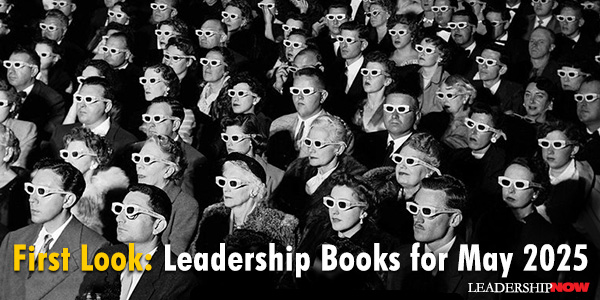
HERE'S A LOOK at some of the best leadership books to be released in May 2025 curated just for you. Be sure to check out the other great titles being offered this month.
Dave Whorton went on a journey to find a better way to build companies, a way focused on long-term stability and steady growth, funded through profitability; a way in which leaders were committed to a purpose beyond personal wealth generation, to putting their people first, and to setting up their companies to endure. He calls these companies "Evergreen." Another Way combines Whorton's inspiring story with his Evergreen 7Ps framework, designed to guide more entrepreneurs and business leaders to follow his path. Full of revelations, practical advice, and real-world examples of companies going Evergreen, Another Way is as instructive as it is inspiring at showing capitalism at its best.
Increasingly, people report feeling overlooked, ignored, and underappreciated at work. Simply put, they don't feel like they matter to their leaders or organizations—and it's taking a toll. This hidden epidemic of insignificance is fueling a mental health crisis, intensifying loneliness, and, for organizations, driving disengagement, turnover, and low performance. Zach Mercurio reveals how mattering to others is a fundamental—yet often overlooked—requirement for thriving. He introduces a simple yet effective framework for making daily interactions with your people more meaningful: Noticing: the practice of seeing and hearing others, Affirming: the practice of showing people how their unique gifts make a difference, and Needing: the practice of showing people they're relied on and indispensable
How to measure a life? After a career of service, retired four-star general Stanley McChrystal had much to contemplate. He pondered his successes and failures, his beliefs and aspirations, and asked himself, Who am I, really? And more importantly, who have I become? When I die, how will I be measured? In the end, McChrystal came to a conclusion as simple as it was profound: the reality of who we are cannot be recorded in dates or accomplishments. It is found in our character—the most accurate, and last full measure, of who we choose to be. On Character offers McChrystal’s blueprint for living with purpose and integrity, challenging us to examine not just our deeds but who we become through them.
An inspiring, practical book by Gui Loureiro, Regional CEO overseeing Walmex, Walmart Canada, and Walmart Chile, and his executive leadership coach Carlos Marin that shows how even the most successful leaders must be open to personal change in order to transform their company. Reinventing the Leader is the turbulent story of how it happened that’s especially relevant in this age of globalization. Gui learns from Carlos that to change the company he must first transform his own leadership style. Written from the dual perspectives of a CEO and his leadership coach, this candid book provides an insightful blueprint for any organization’s success. Today’s leaders are expected to inspire by sharing a vision based on purpose, not just profits. Loureiro and Marin’s enlightening account of self-discovery and business reinvention defines a fresh new approach to leadership for the future.
From Jon Gordon comes a powerful new fable on what it takes to build a truly great team. Through engaging storytelling, real-world lessons, and actionable insights, Gordon reveals the seven commitments that great teams must make to build trust, foster connection, overcome adversity, and achieve extraordinary success. Whether you're a business leader, coach, entrepreneur, or team member, this book will inspire you to commit, lead with purpose, and build a team that wins, thrives, and leaves a lasting impact.
In The Optimist, the Wall Street Journal reporter Keach Hagey presents the most detailed account yet of Altman’s rise, from his precocious childhood in St. Louis to his first, failed startup experience; his time as legendary entrepreneur Paul Graham’s protégé and successor as head of Y Combinator, the start-up accelerator where Altman became the premier power broker in Silicon Valley; the founding of OpenAI and his recruitment of a small yet superior team; and his struggle to keep his company at the cutting edge while fending off determined rivals, including Elon Musk, a former friend and now Altman’s bitter opponent. Hagey delivers a nuanced, balanced, revelatory account of the individual who is leading us into what he himself has called “the intelligence age.” Altman is a figure out of Isaac Asimov or Neal Stephenson. Or he is the author himself: if it feels as though we have all collectively stepped into a science fiction short story, it is Altman who is writing it.
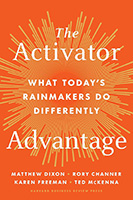 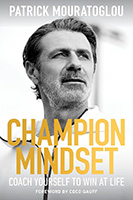  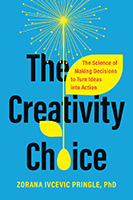
“You can't think well without writing well, and you can't write well without reading well. And I mean that last "well" in both senses. You have to be good at reading, and read good things.” — Paul Graham, Y Combinator co-founder
Posted by Michael McKinney at 07:35 AM
04.30.25

LeadershipNow 140: April 2025 Compilation
See more on
Posted by Michael McKinney at 10:02 AM
04.28.25

Lead Forward, Even When the Path Isn’t Clear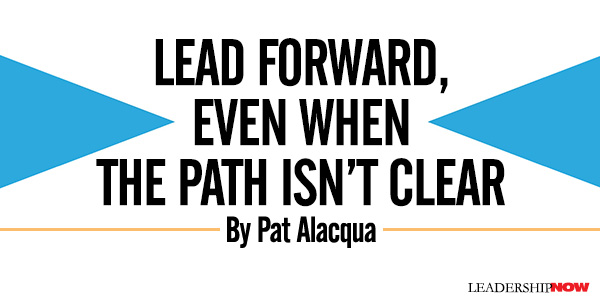
WHEN the path ahead is clear, leadership feels easier. You can plan, predict, and rally your team around certainty. But real leadership shows up when the road disappears. In uncertain times, leadership doesn’t collapse from lack of effort. It collapses because leaders mistake activity for clarity. In doing so, they lose momentum when it matters most. When the next move isn’t obvious, when conditions change faster than plans can adapt, leaders make their mark — not by guessing, not by waiting, but by having clear priorities, guiding principles, and a shared purpose strong enough to move through uncertainty. Forward leading involves the kind of thinking that turns obstacles into opportunity and the discipline to move forward when others freeze. Furthermore, leadership in uncertainty isn’t about moving faster. It’s about thinking differently. It requires slowing down and clarifying outcomes, aligning decisions, and building momentum when others freeze. The leaders who grow companies, teams, and careers aren’t the ones who predict the future. They’re the ones who build the ability to move through uncertainty. Why Clarity Fades and How Leaders Get Stuck In stable environments, leadership often revolves around executing known plans. But when the environment shifts, trying to execute without adapting becomes risky. The biggest mistake leaders make in uncertain times? They freeze and wait for conditions to stabilize. They assume clarity will return on its own. They keep working as if nothing has changed. Instead of shaping the situation, they wait to be shaped by it. Uncertainty demands a different mindset. It requires the confidence to lead with principles, not predictions. You can’t force outside conditions to clear up. You have to create internal clarity that moves your team forward no matter what. Principles Are the New Playbook When you can’t predict what’s coming next, principles give you the flexibility to move anyway. Principles aren’t rigid rules. They’re the few standards that guide smart decisions when the situation is unclear. Strong leaders lean on principles like:
For example, when a market downturn hit, one leadership team didn’t scramble to rewrite every plan. Instead, it focused on reinforcing a single, clear promise to their top customers and building small daily wins around it. That discipline kept their momentum alive while competitors froze. Three Realities of Leading Through Uncertainty If you’re leading when the path isn’t clear, or you’re preparing for it, accept these realities:
Effectively leading through uncertainty is about using disciplined thinking to stay focused even when the environment shifts around you. Here are five steps that make it possible. Step 1: Protect what won’t change. Even when conditions shift, some things must stay the same. Make them explicit. What are the values that guide every decision?
Have your team write down the top three non-negotiables. Then pressure-test them. Would we still stand by these under stress, change, or pressure? If not, they aren’t actual anchors. These become the foundation your team can trust even as priorities shift. Step 2: Shift from big plans to immediate wins. Big, detailed plans often collapse when the environment changes. Instead, focus on short-term priorities that stay true to your long-term purpose. Ask: What matters most in the next 30 days?
One team dropped its stalled 12-month expansion targets and shifted all attention to renewing five key client contracts in the next 30 days. By narrowing the focus, they rebuilt momentum and reignited broader growth when conditions improved. Clear, near-term priorities make uncertainty manageable. Step 3: Turn mistakes into momentum. In uncertain times, not every move will work. But every move should teach you something. Shift the mindset: What did this decision reveal?
After every project, meeting, or key decision, schedule a 10-minute “Learning Loop” — a fast reflection session to surface what worked, what didn’t, and what needs to shift next. When the team sees adjustment as part of the plan, not a mistake, momentum stays alive. Step 4: See faster, adjust faster. Slow feedback is dangerous when conditions change quickly. Set tighter rhythms between action, observation, and adjustment. Implement: Shorter check-ins
Real-time learning keeps the team flexible without losing focus. Step 5: Anchor every step to purpose. When outside clarity fades, the inside purpose must rise. Keep bringing the team back to: Why are we doing this?
Purpose acts as a compass when the road isn’t visible. How You Lead Creates Stability When things get foggy, your team isn’t just following your orders. They’re following how you think, decide, and act. They’re watching: How you frame uncertainty
When you lead through clear priorities, guiding principles, and shared purpose, you give your team the clarity they need to move forward, even when the path isn’t obvious. You turn uncertainty into progress, hesitation into action, and show that leadership isn’t about waiting for clarity to return — it’s about helping others move forward by creating the clarity they need right now.  
Posted by Michael McKinney at 02:39 PM
04.25.25

Managing Uncertainty in the Face of Global Shocks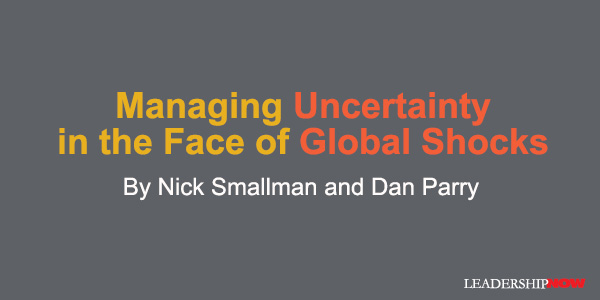
UNCERTAINTY is dominating business planning. The tariffs announced on April 2 could trigger “a self-induced, economic nuclear winter,” according to hedge fund manager Bill Ackman. Businesses and nations are locked into a complex, international web of trade networks, just-in-time supply systems, currency exchanges, and mutual competition. And much of it is underpinned by the US dollar. Far from the US being “forced to sit on the sidelines as other nations got rich and powerful,” US GDP per capita is much higher than that of any other large country. Consequently, global shocks — perhaps arising from unilateral decisions on international trade, climate change, or a pandemic — can trigger a negative impact that touches businesses everywhere. In the US, tariffs will make foreign cars more costly for consumers. But US-built cars contain many foreign parts that are now set to become more expensive. And US car makers are likely to take the opportunity to raise their prices too. Higher prices on Main Street are unlikely to come without pain. Reacting to falling consumer confidence — down 30 percent since November 2024 — Federal Reserve Chair Jerome Powell was warning of “heightened uncertainty” even before the April 2 tariffs. Since then, volatility in the markets has increased the risk of difficult trading conditions in the next year at least. Fearful moments like this can lead either to paralysis that delays decisions and freezes actions or to panicky impulses to do something. A third way, however, helps leaders find a more reliable path back to stability. Fearful reactions are natural. But they can affect your judgement and stop you thinking rationally. You can’t prevent an emotional response to uncertainty, but you can keep it in context. Smart leaders prepare in advance, protecting business continuity by developing resilience in their business and their people. This safety net gives them the confidence to sidestep unhelpful emotions so that they can focus on the decisions that will help to make a difference. Here’s how: 1. Reset your relationship with uncertainty Imagine taking a daily walk in the park. Change involves taking an unfamiliar path. Complexity comes when the new path breaks into multiple different paths. Uncertainty switches off daylight and introduces a cliff edge while you try to get home safely. The brain likes to see things clearly and confidently. Without certainty we feel fearful, which leads to two further reactions. We might either pause decisions and actions, and tread carefully to avoid stumbling off the cliff into the worst effects of a recession. Or we might try the opposite and rush to act, so that we’re doing something — anything — whether it might help in the long-run or not. By recognizing fear as a first response rather than a final one, you can get past these fight-or-flight reactions and find the peace of mind to calmly and effectively stick to your plan. 2. Work with your people When certainty is thin on the ground, leaders can’t be expected to have all the answers. It helps to have the support of other people. This is organizational resilience, which relies on personal character. Leaders can help their people find the confidence and creativity to cope in a crisis by encouraging a culture of social wellbeing. Focusing on trust, respect, belonging, and psychological safety, social wellbeing brings people together, giving them the reassurance to suggest new solutions, try new things, and collaborate in effective teamwork. For example, collective intelligence rises when teamwork is stronger, dissenting opinions are allowed, and no one defaults to blame. In times of difficulty, relationships between employers and employees can be cemented by clear-cut communication. Regular updates and honest assessments help lay the groundwork for tough messaging that may need to be delivered. It also helps to talk to people outside the team, even outside the business. Leaders who turn to their personal network may find new ideas and alternatives that may shape their decisions. 3. Get back to making decisions Having freed themselves from emotions and assessed information and options from both inside and outside the business, leaders can make the informed decisions that will start to restore a little stability. A decision-making framework is helpful, especially when practiced over time. This can rely on one of the forms of critical thinking. For example, scientific thinking approaches things from the mindset of a scientist — making an assumption, looking for evidence, and using it to assess whether the assumption is correct. Scientific thinking helps to nail down certainty. Similarly, flexible thinking (toggling between alternate viewpoints, known as “mental models”), or creative thinking (suspending conformity and workshopping new solutions), can also support decision-making processes. Abilities in managing uncertainty — breaking free of emotions, encouraging a healthy culture, building resilience, setting communication standards, and effective decision-making — are collectively known as future skills. Together they offer decisive steps in coping with the fallout of uncertainty. Future skills are best developed in advance. They can be learned through training, and they bring out the best in human capabilities. In the uncertain months ahead, whether America slides into recession or not, well-prepared organizations will lead the way back to better days. Leaders who have the resilience, the preparation, and the team to get back on track will be able to reclaim a little competitive edge and help their organization make the all-important shift from surviving to thriving.  
Posted by Michael McKinney at 10:17 AM
04.24.25

Leading Thoughts for April 24, 2025
IDEAS shared have the power to expand perspectives, change thinking, and move lives. Here are two ideas for the curious mind to engage with: Rosabeth Moss Kanter on developing winning streaks: “Experiencing troubles is not all bad. Rather than interrupting the cycle of success, responding to adversity might accelerate it. New threats become less threatening when people have successfully solved previous problems. Potential leaders might become stronger when they have successfully resolved crises or weathered adversity. Troubles, in fact, might actually be good for winners.” Source: Confidence: How Winning Streaks and Losing Streaks Begin and End Josh Linkner on refining your work: “It’s the ritual of refinement that’s often the difference between mediocre and legendary work. It’s been said that the one thing all great authors have in common is lousy first drafts. The difference between a bad book, a decent book, and a breakaway bestseller is often directly linked to the amount of time invested in the refinement stage.” Source: Big Little Breakthroughs: How Small, Everyday Innovations Drive Oversized Results Look for these ideas every Thursday on the Leading Blog. Find more ideas on the LeadingThoughts index.
Posted by Michael McKinney at 03:11 PM
04.21.25

Ready to Win: What I Learned About Preparing for Sustained Success as a Basketball Coach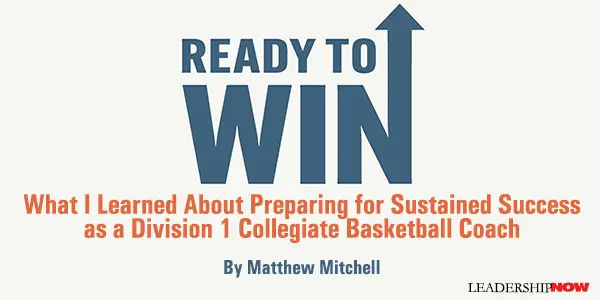
ACHIEVING sustained success hinges on consistent and well-conceived preparation. If you fail to work hard and think hard during preparation, no amount of talent or performance under pressure is going to save you. This is something so simple and easy to understand, yet it’s a shortcoming I see over and over in sports, business, and life. I was the head coach of the University of Kentucky women’s basketball team for 13 seasons. It was a terrific ride that included three visits to the Elite 8 of the NCAA tournament, a Southeastern Conference (SEC) championship, and three SEC Coach of the Year awards. Preparation was key to our success. To give a very basic example of the importance of preparation in basketball, let’s say it’s nearing the end of a college basketball season, and a team is gearing up to play a tough conference game. The coach has watched enough video to design a game plan that exploits the weakness of the opponent. The plan will rely on lots of full-court press and pressure defense. The coach has correctly identified the perfect plan in terms of strategy — the upcoming opponent is definitely weak in handling pressure for a full game. However, there’s a big problem. The coach’s own team isn’t physically capable of sustaining the strategy. Compared to the rest of the world, the athletes are no doubt in good physical shape. But they aren’t in good enough shape to apply the relentless pressure that would likely win the game. How many businesses struggle with this same concept? Let’s say you’re a leader in a company that relies on a complex sales process with a long cycle. What your team is doing right now to make initial contact with prospects will directly impact whether you’ll meet your sales goal several months from now. You may already be losing that “game” right now, and nothing your team does later can make up for it. There’s another huge problem for leaders who fail to get their teams ready to win: they’re guaranteed to lose the confidence of their team. People don’t like to lose, but even worse is feeling like you’re in a no-win position. If you don’t get your team ready to succeed, confidence erodes. Eventually, if it happens enough times, you’ll be a leader in name only (and maybe not even in name if you lose your position because of it). As a leader, you show your team exactly how much you care about them when you place a premium on preparation and accountability. Great leaders are honest enough to consistently hold people accountable for the process and habits of preparation. At a high-level, the journey to great preparation is broken into two parts. The first part is about the mindset you need — the “thinking filters” that go into your pursuit of success. The second part involves consistently applying a framework of constant preparation. Creating a habit of mind that prepares you for success involves: 1. Evaluating your definition of success. Get clear on what success means to you. Hazy visions and unclear expectations will crush any belief in sustained success. The best place to start is honestly recognizing the unique set of gifts you have as a person. When you recognize and acknowledge your gifts, you can then take the next step and identify where you can best use those gifts to contribute your very best to the world. Ask yourself: What value can you bring, and does it fill you with satisfaction to deliver that value to others? 2. Testing your definition of success against reality. Visions of pie-in-the-sky success aren’t a way of “being positive;” they’re just being unrealistic. If a small e-commerce site CEO says, “In two years, we’re going to exceed Amazon in sales,” no one will want to climb aboard. For any vision of success, large or small, ask yourself a simple question: Do I really believe this is an attainable goal? 3. Deciding to believe in yourself. I think that many people underestimate the role of committing to a decision to believe in themselves. Belief in yourself is about understanding that you have the necessary skills, talent, and developmental abilities to enjoy consistent and long-term accomplishments. To decide this is to say, “Yes, I’m taking responsibility for this belief and affirming that it’s true.” Additionally, applying a framework of constant preparation involves: 1. Getting crystal clear on your goals. Once again, you want to be realistic when you set your goals. Determine if your goal can be measured and what those measurements should be. Think of a clear goal as a lens that helps you see better what’s a useless diversion versus a positive pursuit. Such clarity enables you to say “no” to distractions and “yes” to worthy activities. Also important is creating specific subgoals that will comprise the steps leading to the achievement of your goals. 2. Create a strategy for how you’ll prepare to meet those goals. Essentially, a strategy has to come from your strengths and core competencies; it shouldn’t go against your identity or values. Ask yourself: What are my core competencies, and how can I use them to create the right strategy? For example, I sincerely like connecting with people. So, with any preparation strategy, I ask myself, “Will this task help me build a personal connection?” Once you begin implementing your strategy, make sure to evaluate it regularly and objectively. 3. Execute the details of the strategy with maximum effort and accountability. Five key areas that will guide you in executing a powerhouse preparation plan include: Prioritization, Timelines, Responsibility and Accountability, Resources, and Curiosity. Make decisions on what tasks have the highest priority. Decide how best to spend your time. Put in place accountability parameters. Maximize your resources. And be open to what you could explore further. Once you’ve developed the mindset and defined the framework for a powerful preparation regimen, you’re ready to execute your preparation blueprint that will lead to sustained success.  
Posted by Michael McKinney at 06:08 PM
|
BUILD YOUR KNOWLEDGE
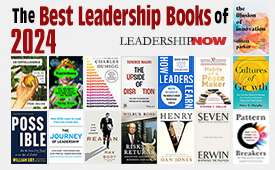 
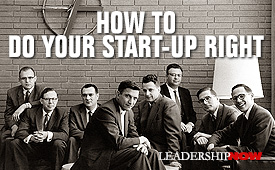
How to Do Your Start-Up Right STRAIGHT TALK FOR START-UPS 
Grow Your Leadership Skills NEW AND UPCOMING LEADERSHIP BOOKS 
Leadership Minute BITE-SIZE CONCEPTS YOU CAN CHEW ON 
Classic Leadership Books BOOKS TO READ BEFORE YOU LEAD |